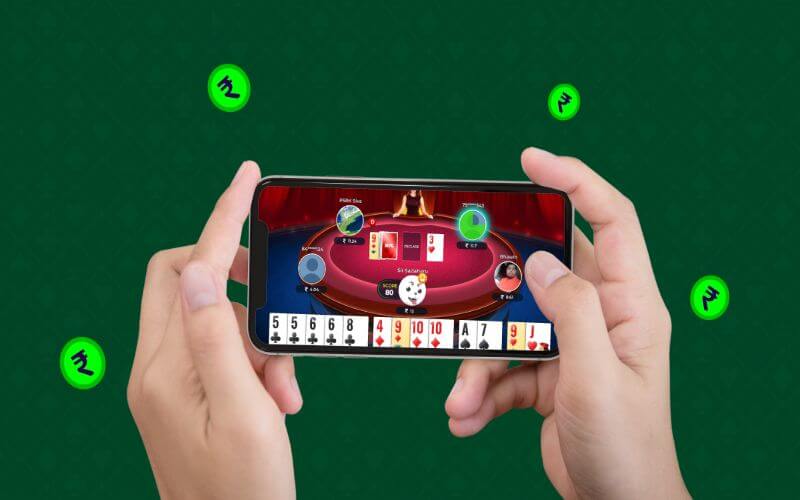
Understanding the Game Flow of Rummy
Before you win, you must understand the rhythm. Indian Rummy at FlushNPlay is a structured skill game that moves through clear, strategic stages.
1. The Deal
Each player is dealt 13 cards from two standard decks. A wild Joker is selected, and the game begins. Players must quickly evaluate their hand for potential pure sequences.
2. Draw & Discard
In clockwise order, players draw a card from the closed or open deck and discard one to the open pile. Each turn is a chance to improve your hand or disrupt your opponents’ strategy.
3. Sequence Formation
The core goal is to form two valid sequences — one must be pure (no Joker). You can also form sets of 3 or 4 same-rank cards from different suits.
4. Declare Smartly
Once you’ve completed your hand, discard the final card and declare. Timing matters: too early can cost you if you’re wrong, too late might let someone else win first.
FlushNPlay Tip: Don’t just play the cards — play the players. Bluff when needed, track discards, and always aim for a zero-point hand.
Learn How to Play Rummy on FlushNPlay
Master the game through clear rules, practical tips, and access to free game formats to sharpen your skills.
Basic Rummy Rules
Before diving into real cash games, every player must understand the basic framework that makes Indian Rummy fair, exciting, and skill-driven on FlushNPlay.
- Objective: Form valid sets and sequences from 13 cards before anyone else.
- Card Distribution: Each player receives 13 cards. One wild Joker is selected at random from the closed deck.
-
Sequence Rules: A valid hand must contain:
- At least one pure sequence (a sequence without a Joker)
- At least one more sequence (pure or impure)
- Optional sets (3 or 4 cards of the same value from different suits)
- Draw & Discard: Players take turns drawing a card (from open or closed pile) and discarding one.
- Declaration: Once a valid hand is formed, declare by discarding your 14th card and arranging the rest.
- Validation: The system will automatically verify if your declaration is valid based on the rules above.
Example of a Valid Hand:
- Pure Sequence: 4♠ 5♠ 6♠
- Second Sequence (Impure): 9♦ 10♦ Joker
- Set: 7♣ 7♦ 7♥
- Remaining Card: Discarded to declare
Remember, a hand without a pure sequence is always considered invalid, no matter how many other sets/sequences it contains.
Game Format Considerations
Points Rummy
Each point carries a pre-decided monetary value. The winner earns based on the opponents' points.
Deals Rummy
Fixed number of deals are played. The player with the highest chips at the end wins the match.
Pool Rummy
Players are eliminated upon reaching 101/201 points. The last remaining player is the winner.
FlushNPlay strictly follows the Indian Rummy guidelines recognized as a skill game by Indian law. Our gameplay is RNG-certified and independently audited for fairness. Every match is designed to reward strategy — not chance.
Pro-Level Tips & Tricks
Whether you’re playing Points, Pool, or Deals Rummy — here are top-tier strategies used by India’s top players on FlushNPlay.
-
Start with a Pure Sequence:
Prioritize building your pure sequence first. It’s non-negotiable for a valid declaration, and often the hardest to complete.
-
Drop Early if Needed:
If your hand has no potential after 2-3 draws, use the first drop to minimize your point loss. Smart players fold early, not late.
-
Observe Discards Closely:
Every card your opponent discards gives you information about their strategy. Don’t help them complete their sequence unknowingly.
-
Jokers are Wild Tools:
Use Jokers in impure sequences or to complete sets, but never in your pure sequence — that makes your hand invalid.
Advanced Strategies
Track Middle Cards
Middle cards like 5, 6, and 7 are versatile. They can form sequences in both directions — but hold them only if they’re useful.
Bluff with Discards
Discard a card that looks valuable to confuse your opponents. Rummy is a game of skill — and psychology.
Play the Timer
Watch how quickly your opponent discards. Fast players may be confident — or bluffing. Use time as a signal.
Target Declaration Timing
Sometimes it’s smart to wait 1–2 turns before declaring to confuse other players — especially in tournaments.
Every move counts in Rummy. The difference between an average and elite player lies in reading hands, optimizing sequences, and making zero-point declarations at the perfect time.
Final Thought from the Pros
Every move counts in Rummy. The difference between an average and elite player lies in:
- Reading opponents’ habits — tracking their discards and predicting card needs
- Optimizing sequences — knowing when to break a set to build a faster declaration
- Zero-point declarations — aiming for hand perfection, not just minimal points
- Confidence in decision timing — when to drop, bluff, or hold under pressure
“A master rummy player doesn’t react — they calculate, anticipate, and dominate.”